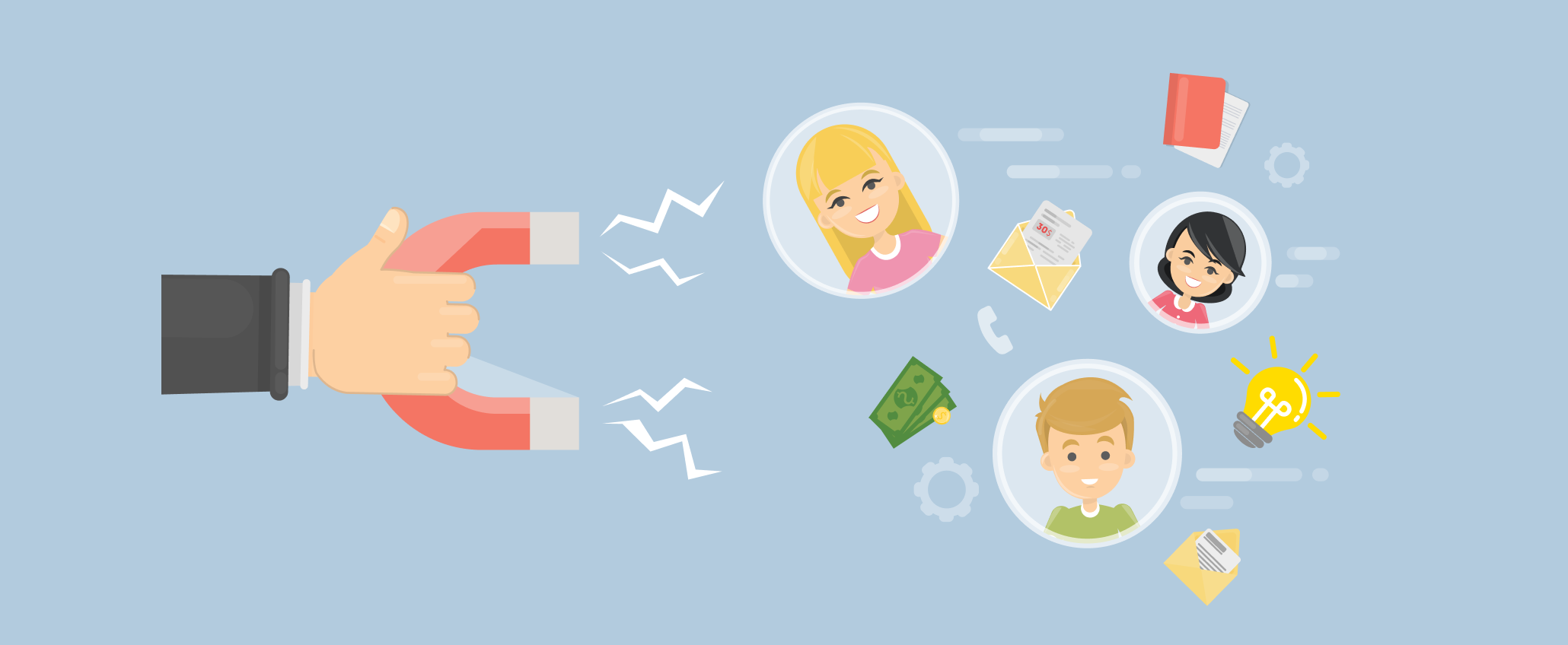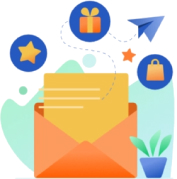If you want to grow your business on Shopify, emphasizing merchant engagement is key. This involves a blend of understanding your audience, leveraging the right tools, and continuously optimizing your approach based on real-world data for Shopify customer acquisition.
Today, we will delve into effective customer acquisition strategies and Shopify development services, while also exploring practical tips on retaining those hard-won leads and turning them into brand loyalists.
What is Customer Acquisition?
Before we delve into specific strategies, let’s establish a clear understanding of customer acquisition. It’s the multifaceted process of attracting, engaging, and converting strangers into loyal customers. This process encompasses various marketing initiatives, sales channels, and touchpoints that influence a customer’s journey, from initial brand awareness to purchase and beyond.
Effective Customer Acquisition Strategies 2024

Now that we’ve defined customer acquisition, let’s explore some of the most effective strategies you can implement for your Shopify store:
Content Marketing
Content marketing is a powerful tool for attracting organic traffic and establishing your brand as a thought leader in your industry. By creating high-quality, informative content that resonates with your target audience, you can build trust, educate potential customers, and ultimately drive sales.
Here are some content marketing ideas for your Shopify store:
- Blog posts: Share valuable insights and industry trends related to your products or niche.
- Product descriptions: Craft compelling product descriptions that highlight features, benefits, and address common customer pain points.
- Infographics and eBooks: Create visually appealing content that educates and entertains your audience.
- Video tutorials and demonstrations: Showcase your products in action and provide helpful how-to guides.
Search Engine Optimization (SEO)
SEO involves optimizing your Shopify store and content to rank higher in search engine results pages (SERPs) for relevant keywords. When potential customers search for products or services related to your offerings, you want your store to appear at the top of the search results.
Here are some SEO tips for your Shopify store:
- Keyword research: Identify relevant keywords with high search volume and low competition.
- On-page optimization: Optimize your product titles, descriptions, and meta tags with target keywords.
- Backlink building: Earn backlinks from high-authority websites to improve your domain authority.
- Technical SEO: Ensure your website is mobile-friendly, has a fast loading speed, and a clean code structure.
Social Media Marketing
Enhancing your Shopify store’s presence on social media can significantly boost customer engagement. To make the most out of this strategy, hire Shopify developers who can integrate your store with social media platforms, enabling features like shoppable posts and direct checkout
Here are some social media marketing tips for your Shopify store
- Choose the right platforms: Identify the social media platforms where your target audience is most active.
- Create engaging content: Share a mix of product-related content, industry news, user-generated content, and behind-the-scenes glimpses into your brand.
- Run social media ads: Utilize social media advertising platforms to target specific demographics and interests with laser precision.
- Collaborate with influencers: Partner with relevant influencers in your niche to reach a wider audience and leverage their credibility.
Pay-Per-Click (PPC) Advertising
PPC advertising allows you to display targeted ads on search engines, social media platforms, and other websites. You only pay when someone clicks on your ad, making it a cost-effective way to drive targeted traffic to your Shopify store.
Here are some PPC advertising tips for your Shopify store:
- Define your target audience: Identify your ideal customer to ensure your ads reach the right people.
- Craft compelling ad copy: Write clear, concise, and persuasive ad copy that entices users to click.
- Set realistic budgets: Allocate a budget for PPC advertising that aligns with your overall marketing goals.
- Track and analyze results: Monitor your PPC campaigns closely and adjust your strategies based on performance data.
Email Marketing
Email marketing remains a powerful tool for nurturing leads, driving sales, and fostering customer loyalty. By building an email list and sending targeted email campaigns, you can stay connected with your audience, promote new products and offers, and convert leads into repeat customers.
Here are some email marketing tips for your Shopify store:
- Build your email list: Offer incentives like discounts or early access to new products in exchange for email signups.
- Segment your email list: Create targeted email campaigns based on subscriber demographics and purchase history.
- Personalize your emails: Use subscriber names and purchase history to personalize your email content.
- Automate your email marketing: Leverage email automation tools to send personalized welcome emails, abandoned cart reminders, and post-purchase follow-ups.
Customer Retention Strategies for Shopify

Now that you’ve attracted new leads and converted them into paying customers, it’s crucial to focus on retaining them. Here are some effective customer retention strategies for your Shopify store:
Offer Excellent Customer Service
Providing exceptional customer service is paramount to retaining customers. When customers have a positive experience interacting with your brand, they’re more likely to return for future purchases. Here are some ways to deliver excellent customer service:
- Respond to customer inquiries promptly and professionally.
- Offer multiple channels for customer support, such as email, live chat, and phone.
- Empower your customer service representatives to resolve issues efficiently.
- Go the extra mile to exceed customer expectations.
Implement a Loyalty Program
Loyalty programs reward repeat customers for their business, incentivizing them to continue shopping at your store. Here are some ideas for a loyalty program:
- Offer points for every purchase that can be redeemed for discounts or rewards.
- Provide tiered loyalty programs with increasing benefits for higher-spending customers.
- Give exclusive access to sales, promotions, and new product launches to loyalty program members.
Personalize the Customer Experience
Personalization is a powerful tool for building relationships with customers and keeping them engaged. By tailoring the shopping experience to individual customer preferences, you can make them feel valued and appreciated. Here are some ways to personalize the customer experience:
- Recommend products based on past purchase history and browsing behavior.
- Send targeted email campaigns with personalized offers and discounts.
- Create a loyalty program that rewards customers for their specific interests and purchase habits.
Build a Community Around Your Brand
Fostering a community around your brand goes beyond simply selling products. It’s about creating a space where customers can connect, share their experiences, and feel like part of something bigger. Here are some ways to build a community around your brand:
- Create a forum or social media group where customers can interact.
- Host online or in-person events related to your niche.
- Encourage user-generated content and share it on your social media channels.
- Partner with other brands or influencers in your industry to reach a wider audience.
Best Shopify Customer Acquisition Tools
Shopify offers a rich ecosystem of tools and apps designed to streamline and enhance your customer acquisition efforts. From marketing automation to SEO, social proof, and beyond, these tools are engineered to attract more visitors to your store and convert them into loyal customers. Here’s a curated list of some of the best Shopify customer acquisition tools that can help elevate your e-commerce strategy:
1. Klaviyo
Klaviyo is a powerful email marketing platform that allows you to send personalized, targeted emails based on customer behavior and purchase history. It’s particularly effective for segmenting your audience and automating email campaigns, making it easier to nurture leads and convert them into customers.
2. Omnisend
Omnisend extends the capabilities of traditional email marketing tools by integrating SMS, push notifications, and more, enabling a cohesive marketing strategy across multiple channels. Its automation features help deliver targeted messages at the right time to boost conversion rates.
3. Privy
Privy offers a suite of tools designed to improve website conversion rates. From pop-ups and banners to spin-to-win wheels, Privy helps you capture email addresses and other valuable information from your site visitors, growing your list and providing opportunities for engagement.
4. Yotpo
Yotpo helps e-commerce businesses collect customer reviews, photos, and Q&A to build trust and increase sales. Its integration with social platforms also allows for easy sharing of user-generated content (UGC), enhancing social proof and attracting more customers.
5. ReferralCandy
ReferralCandy automates the creation and management of your referral program, encouraging your existing customers to refer their friends and family. It’s an effective tool for leveraging word-of-mouth marketing to attract new customers and reward loyal ones.
Calculating Customer Acquisition Cost (CAC)
Understanding your Customer Acquisition Cost (CAC) is critical for assessing the effectiveness of your marketing efforts. CAC is calculated by dividing the total marketing expenses by the number of customers acquired during a specific period. Shopify store owners should strive to optimize their marketing strategies to reduce CAC while maximizing the lifetime value (LTV) of each customer.
Frequently Asked Questions
Customer acquisition focuses on attracting new leads and converting them into paying customers. Customer retention is about keeping existing customers happy and coming back for more purchases.
There are several metrics you can track to measure the success of your customer acquisition strategies, such as website traffic, conversion rate, cost per acquisition (CPA), and customer lifetime value (CLTV).
There’s no one-size-fits-all answer to this question. The amount you invest in customer acquisition will depend on your budget, industry, and business goals. However, it’s generally considered wise to allocate a portion of your marketing budget to both customer acquisition and customer retention efforts.
There are several free or low-cost customer acquisition strategies you can implement, such as content marketing, social media marketing, and search engine optimization (SEO).
There are several ways to personalize the customer experience on your Shopify store, such as recommending products based on past purchase history, sending targeted email campaigns, and offering loyalty programs.
Conclusion
By implementing these customer acquisition and retention strategies, you can attract new customers to your Shopify store, convert them into loyal brand advocates, and ensure your business thrives in the long run. Remember, customer acquisition is an ongoing process. Furthermore, you can hire Shopify developers for flawless implementations.
Stay Tuned for Latest Updates
Fill out the form to subscribe to our newsletter





